

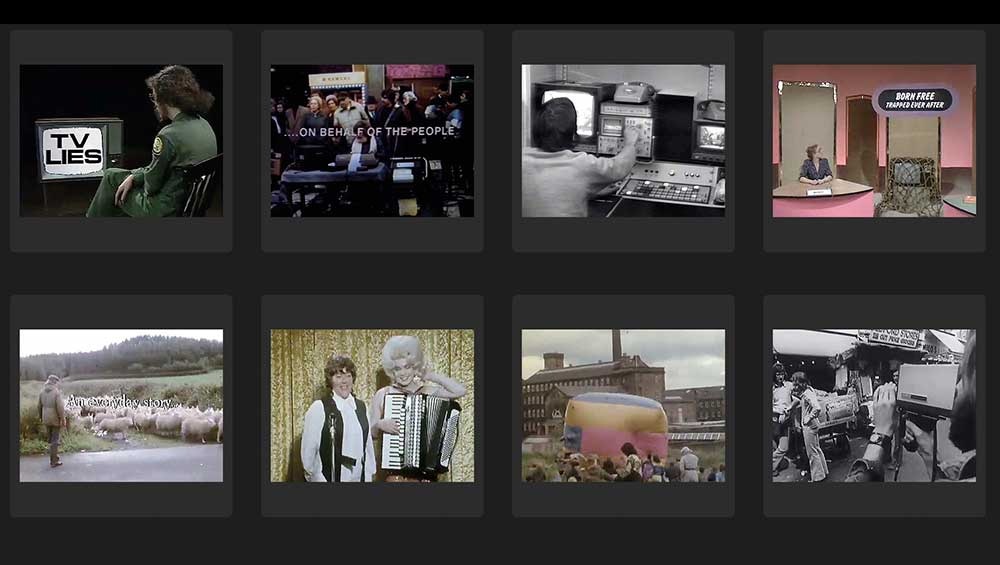
People Make Television, Raven Row, London 2023.
Raven Row, London
28 January – 26 March 2023
by JOE LLOYD
It is general election day in 1974, and Knowle West Television is broadcasting a political special like no other. Two women sit close together in an almost featureless room, with only striped wallpaper for decoration. The lead presenter makes a startling announcement: this show will not consider policy. Instead, it will focus on the “sex appeal” of the three main party leaders. The duo cast their eyes over the candidates with a forensic glare and an earthy wit.
Labour’s Harold Wilson is “Our Father on Earth”, “a cuddler”, “a homely type”. His kindness to dogs is deemed to reflect his kindness to people. The Conservative Edward Heath is saluted for “his nice bronze tan”; he is “a rock that this country is built around”. And one of the presenters has “always had a secret passion for [Liberal party leader] Jeremy [Thorpe]”. There is a lively discussion over whether Thorpe looks like a country squire caught mowing the lawn. Preliminary assessment down, the women move out on to the street, vox popping various game passersby.
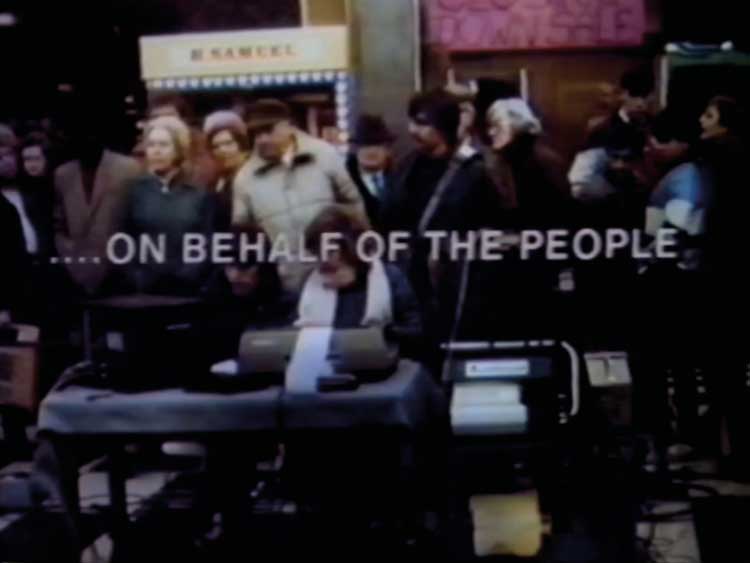
On Behalf of the People, Swindon Viewpoint, 1984. Copyright and courtesy Swindon Viewpoint.
This is a programme from the Bristol TV channel, a cable network that ran between May 1973 and March 1975. It aimed to allow local people to participate in making television: Knowle West Television was a network of volunteers from a low-income estate who were trained to use Sony Portapak video cameras to make their own shows. More than 700 hours of programming were produced by the network, reaching 23,000 subscribers. About 100 hours of programming have survived in videotape form and been digitised. Much of this is now viewable at People Make Television, the first exhibition at the Raven Row gallery in east London since 2017.
The not-for-profit Raven Row, which inhabits a Huguenot townhouse in the Dickensian alleyways off Spitalfields, is one of London’s most intriguing offbeat exhibition spaces. Established by Alex Sainsbury in 2009, it has made a habit of programming the unexpected. Many of them have been solo surveys of contemporary greats under-appreciated in the UK. There have also been many group shows from oblique angles: one 2015 exhibition looked at how five issues of Studio International shaped debates about the role of sculpture in the 1960s and 70s. The gallery’s temporary closure left a gaping hole in London’s art environment. Now, after several years of delay due to the pandemic, Raven Row has finally returned to public-facing mode.
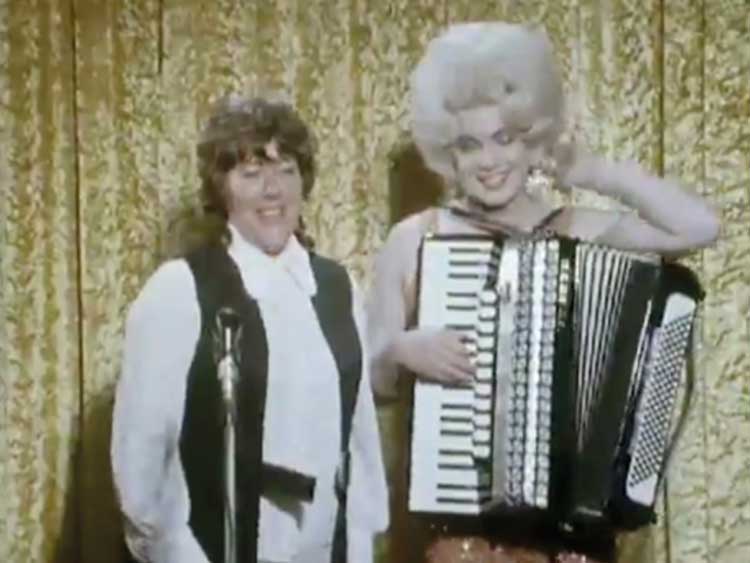
The Whetley Voice, Open Door, BBC2, 1974. BBC copyright content reproduced courtesy of the British Broadcasting Corporation. All rights reserved.
People Make Television gives us the chance to square up, close and personal, with the public half a century ago. It collects hundreds of DIY television programmes from 1970s Britain. Many of the gallery’s historical rooms have been turned into minimalist sitting rooms, with sofas facing box-like TVs each containing a selection of programmes from local TV networks; visitors can take the remote and channel-surf. The large ground-floor gallery is home to around a dozen TVs arranged in circles showing programmes from the BBC’s Open Door strand, which launched in 1973 and continued for 10 years; you wear a headpiece and use the remote to choose which screen to listen to. A computer room upstairs allows for more dedicated explorations of the archive. It is an enormous pile of footage to get to grips with. You could visit the exhibition for a few hours every day of its run and still have much more to see.
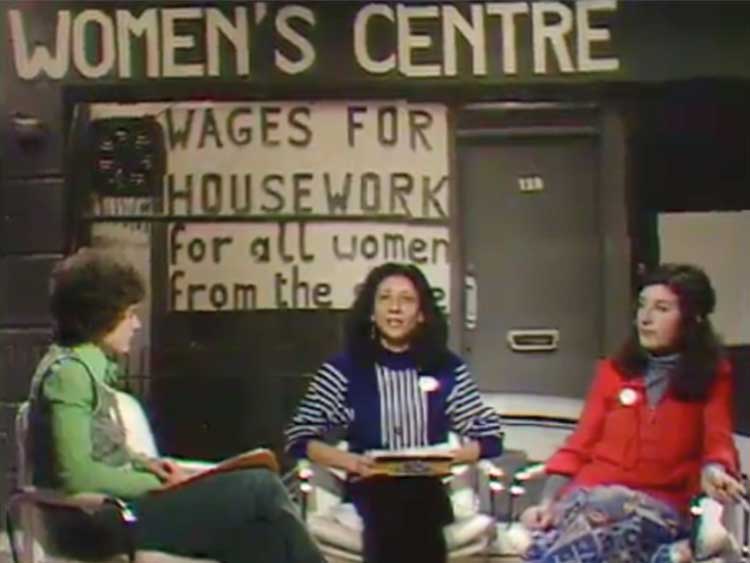
The Wages for Housework Campaign: All Work and No
Pay, Open Door, BBC2, 1976. BBC copyright content reproduced courtesy of the British Broadcasting Corporation. All rights reserved.
The ladies of Knowle West did not realise how significant the 1974 general election, won by Labour, would be for their own work. The Bristol Channel was one of several networks established after Heath’s Conservative government offered licences for local cable channels in areas with poor reception for national broadcast. They were largely closed in 1975, as Wilson’s Labour government did not support pay-per-view TV. Along with the Bristol network, Raven Row lets us observe others from Sheffield, Wellingborough, Swindon, Greenwich and Milton Keynes.
These networks are incredibly lo-fi. One report from Bristol on a new fine for unleashed dogs begins with what looks like home video footage of various local felines. Sheffield Cablevision, in particular, is an absurdist delight. It featured live variety shows presented by the channel’s station manager, John Brand, who had starred in a Gillette commercial. One surviving clip shows a bizarre supernatural panel show hosted by some unfortunately uncharismatic teenagers, filmed by a cameraperson who seems loth to paint the camera at the right speaker. It starts to resemble the contemporary anti-comedy practised by the likes of Tim Heidecker and Nathan Fielder, where everything runs slightly off-kilter. Unfortunately, only five hours of footage remain.
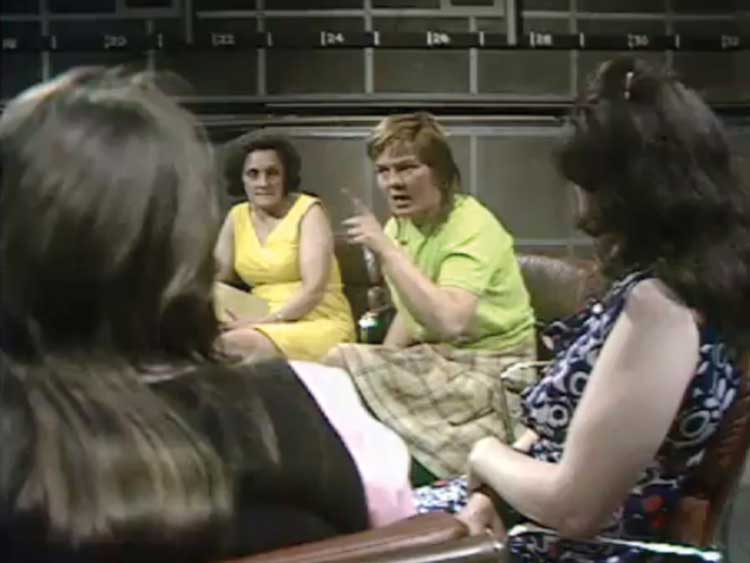
Cleaners’ Action Group, Open Door, BBC2, 1973. BBC copyright content reproduced courtesy of the British Broadcasting Corporation. All rights reserved.
But it is Open Door that takes the starring role. This was an initiative of the BBC’s Community Programme Unit, a fringe department that provided studio and camera crew to “unheard or seriously neglected” individuals and groups so they could make their own programmes with no editorial interference. It was supported by David Attenborough, then the network’s director of programmes, who wanted to increase participatory television and compete with the new cable channels.
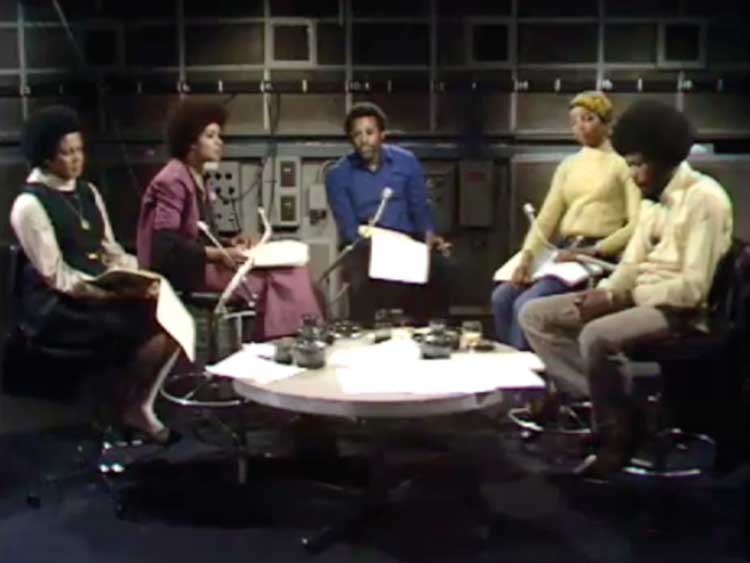
Black Teachers, Open Door, BBC2, 1973. BBC copyright content reproduced courtesy of the British Broadcasting Corporation. All rights reserved.
Ideas for Open Door were submitted by application. In total, 243 episodes were broadcast on BBC2 between 1973 and 1983, representing – in the curator’s words – “anarchists, farmworkers, black teachers, women priests, office cleaners, radical housing associations, trans women, ex-cons, situationists, film co-ops, neurodiverse people, freethinkers and channellers of the extraterrestrial”, among others. Few have been seen since their original broadcast. In a 1979 Radio Times article appraising the series, the cultural historian Naseem Khan called it “a visual Hyde Park Corner”. It now forms a social history of 70s Britain, albeit one angled by the groups with the will and wherewithal to apply to the BBC.
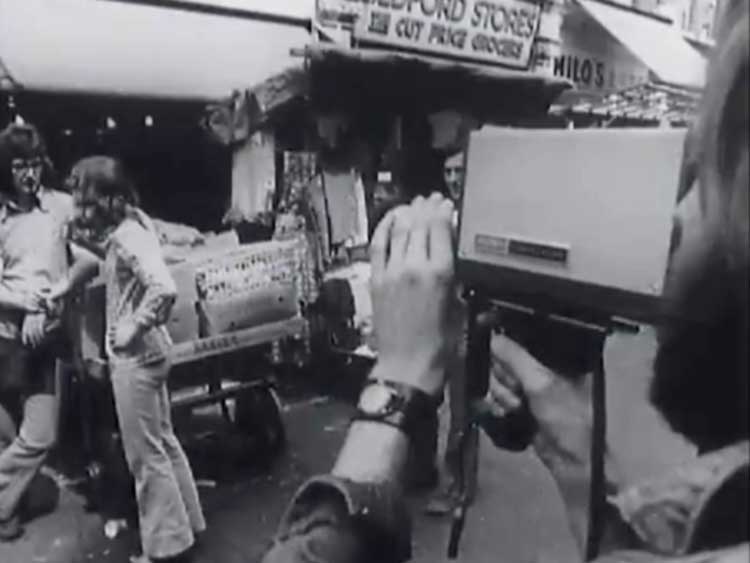
Liberation Films: Starting to Happen, Open Door, BBC2,
1974. BBC copyright content reproduced courtesy of the British Broadcasting Corporation. All rights reserved.
The degree of control given to members of various groups shocks today, when voices for the subject are now often mediated by professional presenters hired to reflect societal norms. A 1973 programme hosted by the Transex Liberation Group allows trans women to steer the debate and agenda, rather than forcing them into the position of subject. This show attracted 500,000 viewers, a peak for the series. Its theme is one of the many that still resonates today, from housing inequality to workers’ rights. A controversial 1976 episode concerned the racist British Campaign to Stop Immigration, one of the very few rightwing organisations that applied to have their voice heard. Three years later, the great cultural theorist Stuart Hall and the actor Maggie Steed presented It Ain't Half Racist, Mum, a searing analysis of racist stereotyping in British television that remains riveting viewing.
Many of the programmes have less immediate vim. Sometimes the disadvantages brought by a lack of professional editors are keenly felt. Many of the episodes are unhurried. But if you sit back and abandon yourself to these shows, the rewards are rich. There is charm in the rough editing, basic camerawork and counterintuitive structuring of segments. Many of the amateur presenters have a straightforward eloquence seldom heard today. It is interesting to see causes now long established, whether for wages for housework or sex education in schools, proselytised with early zeal.
“However awkward many of the constructions and assumptions of these programmes now seem,” writes Sainsbury in his introduction to the exhibition’s accompanying publication, “it is remarkable that a state broadcaster invited the serious representation of overlooked and challenging opinions so close to the national news.” Open Door was replaced by Open Space, which had a higher budget and more control from crew; its output gradually came to resemble more conventional documentaries. They were undoubtably better programmes, in the sense that a producer would understand. But the communal efforts in People Make Television have a homespun charm that has seldom been replicated.